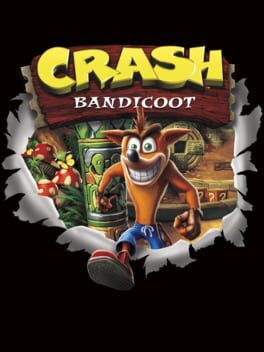Crash Bandicoot feels like a platformer designed in 1985, released in 1996, and re-released in 2017.
Its mechanics are simpler, much simpler than the two platforming kings of the time: Mario by this point had experimented with a variety of powerups and level progression systems, and Sonic had accomplished nuanced momentum and physics-based platforming, as well as telling a simple but effective story through and within its gameplay.
Crash Bandicoot doesn't have too much to offer, by contrast, particularly at first glance. Perhaps the one thing that it can truly claim for itself is the completionist's angle of getting all the gems, involving breaking all the boxes in every level (without dying, depending on the level or version you're playing on).
So far into the series, I think this is probably the standout mechanic of the entire franchise that distinguishes it from other platformers.
But like the object carrying system first introduced in Super Mario Bros. 3 (or 2, depending on your point of view about Doki Doki Panic), then later refined in Super Mario World and future games, I think there's more depth to the gems and boxes than it first appears, which redeems Crash Bandicoot for me, albeit moreso on a second playthrough when I can properly appreciate it.
Levels, especially those that require you to return after collecting colored gems, encourage you to play them multiple times to familiarize yourself with them and master everything they have to throw at you. This process began for me as trial and error, but slowly I transitioned into taking my time and figuring the level mechanics out (there are a surprising amount of timed moving platforms that follow fixed patterns in this game when you think about it), eventually getting to enough of a consistency that I found myself genuinely enjoying the game and having an easier time with it.
I think this is a general pattern that will re-emerge in more refined forms in the next two games in the series, but the N. Sane Trilogy also drives the point home for this instalment by adding Time Trial relics that test your mastery of the levels even further, expecting players to not only play without deaths, but also while going as fast as they can.
I haven't really played them, and I don't think I ever will, but it's a nice touch that emphasizes Crash Bandicoot's game design.
Crash Bandicoot is a game that feels like it was designed in 1985, but games in 1985 still had genuine nuance to them, like in Super Mario Bros. and, yes, the Lost Levels.
I think Crash has nuance. It's far from perfect, and it shows its age as a video game more than I think other games of its time do, but...
It's not Bubsy 3D, I can say that much.
Its mechanics are simpler, much simpler than the two platforming kings of the time: Mario by this point had experimented with a variety of powerups and level progression systems, and Sonic had accomplished nuanced momentum and physics-based platforming, as well as telling a simple but effective story through and within its gameplay.
Crash Bandicoot doesn't have too much to offer, by contrast, particularly at first glance. Perhaps the one thing that it can truly claim for itself is the completionist's angle of getting all the gems, involving breaking all the boxes in every level (without dying, depending on the level or version you're playing on).
So far into the series, I think this is probably the standout mechanic of the entire franchise that distinguishes it from other platformers.
But like the object carrying system first introduced in Super Mario Bros. 3 (or 2, depending on your point of view about Doki Doki Panic), then later refined in Super Mario World and future games, I think there's more depth to the gems and boxes than it first appears, which redeems Crash Bandicoot for me, albeit moreso on a second playthrough when I can properly appreciate it.
Levels, especially those that require you to return after collecting colored gems, encourage you to play them multiple times to familiarize yourself with them and master everything they have to throw at you. This process began for me as trial and error, but slowly I transitioned into taking my time and figuring the level mechanics out (there are a surprising amount of timed moving platforms that follow fixed patterns in this game when you think about it), eventually getting to enough of a consistency that I found myself genuinely enjoying the game and having an easier time with it.
I think this is a general pattern that will re-emerge in more refined forms in the next two games in the series, but the N. Sane Trilogy also drives the point home for this instalment by adding Time Trial relics that test your mastery of the levels even further, expecting players to not only play without deaths, but also while going as fast as they can.
I haven't really played them, and I don't think I ever will, but it's a nice touch that emphasizes Crash Bandicoot's game design.
Crash Bandicoot is a game that feels like it was designed in 1985, but games in 1985 still had genuine nuance to them, like in Super Mario Bros. and, yes, the Lost Levels.
I think Crash has nuance. It's far from perfect, and it shows its age as a video game more than I think other games of its time do, but...
It's not Bubsy 3D, I can say that much.
